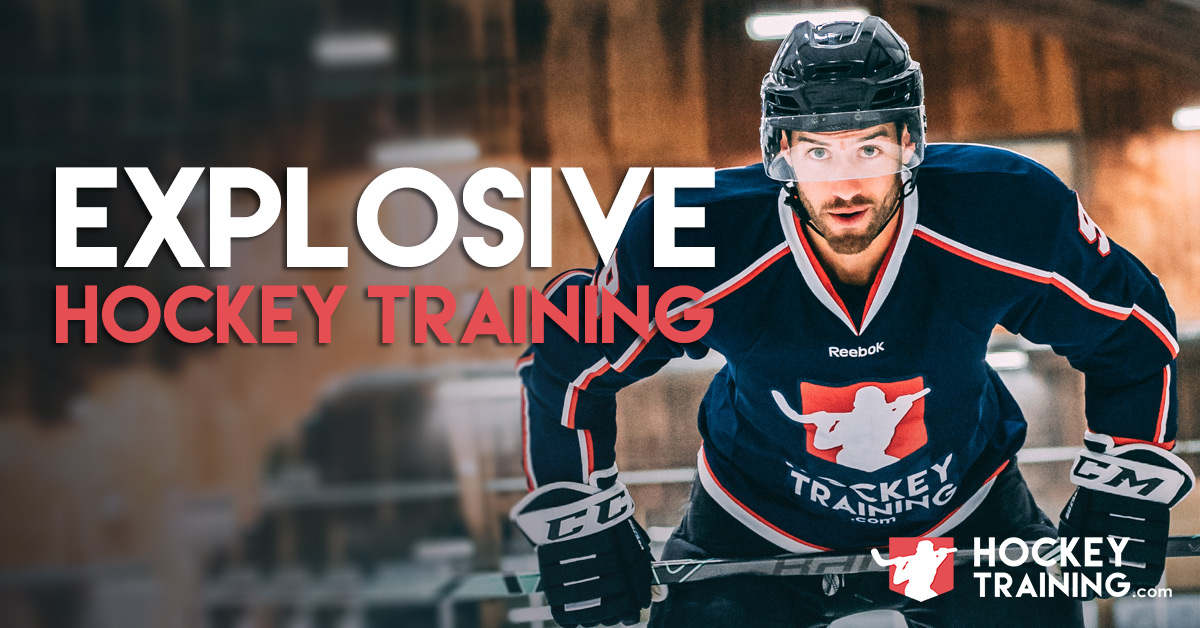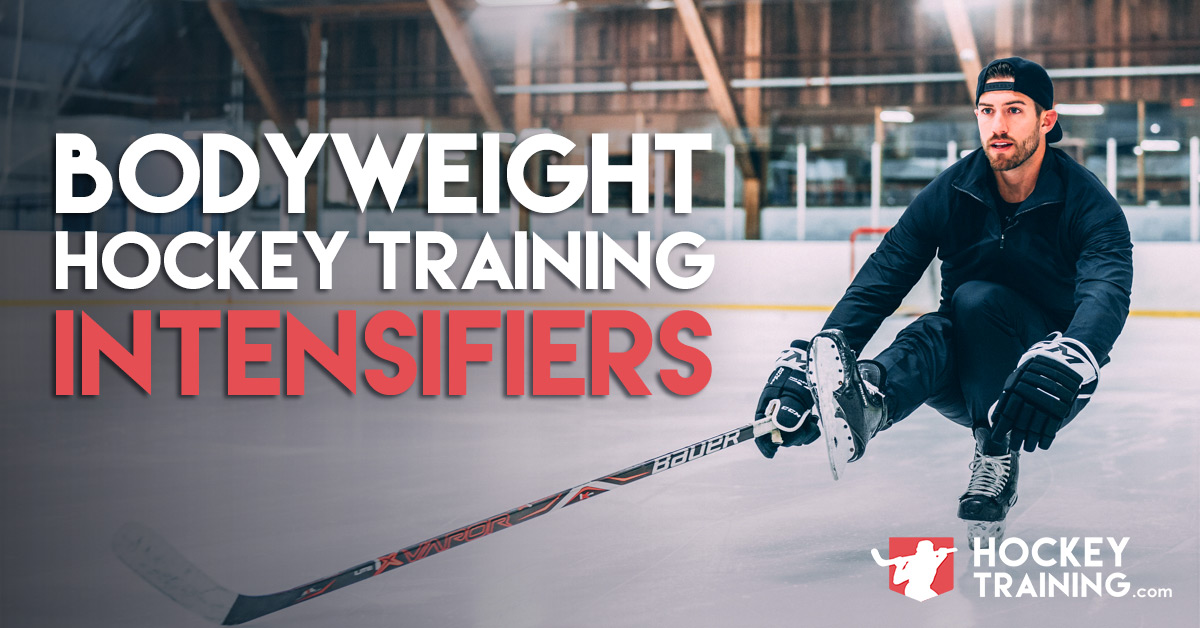Improving your body composition and hockey performance is a multifaceted goal that requires a multifaceted training and nutrition approach.
I have generated a massive body of work now here at HockeyTraining.com in the form of articles, podcasts, and videos – and I still am only scratching the surface on what needs to be educated and taught in the hockey strength and conditioning world.
In this highly context-based and comprehensive approach, there are many different ideologies and ways in which you can utilize resistance training – but, today I want to narrow in on one very important aspect…
Total body power training.
Large, compound, total body power movements provide many unique benefits for hockey athletes. Sometimes these movements get lost when hockey athletes just do bodybuilding or powerlifting work – and they don’t realize what they are missing out on.
In this article it is my intention to bring out the importance of total body explosive work so that it never goes unrecognized in any hockey athletes programming moving forward from today.
Breaking It Down
Power = Strength x Speed
By definition, everything that we do in life (whether inside the gym or not) involves some degree of power expression.
Whoever finished the triathlon first produced the most power.
Whoever did the most push-ups within one minute produced the most power.
Previously, your grandma took 3 minutes to walk up a flight of stairs, but ever since she started eating well and exercising, now she can get it done 90 seconds because she is producing more power.
To make sure you’re not confused, I want to be very specific about this.
Just about everything you do in your training can improve your ability to generate power.
The goal of these hockey specific total body power exercises, however, is specifically designed to improve your explosive power.
This involves a coordinated effort by the entire body to create force in a highly explosive manner. Athletic movements – whether it’s taking a slap shot, sprinting, skating, or throwing a punch – are driven not by power generated in only one area of the body, but by a collection of individual muscles working together to produce explosive power in a smooth, coordinated sequence.
Total body power exercises use as many muscles as possible in a sequential and explosive manner to obtain maximal force in the primary pillars of athletic movement:
- Locomotive Power
- Level Changing Power
- Pushing and Pulling Power
- Rotational power
The Power of Specificity
Although hockey players have varying skills depending upon their position out on the ice, these four pillars of power provide the source for all explosive actions out on the ice.
That is, regardless of the skill being expressed (Defense vs. Offense vs. Goalie), explosive sport-movements involve a total-body expression of power that is primarily either locomotive, level changing, push/pull, or rotational.
Whether you’re changing directions at high-velocities with extreme agility (rotational), taking a slap shot (push/pull), altering your center of gravity to create stability for a body check or make a quick toe save (changing levels), or skating as fast as you possibly can (locomotive) – your power is initialized by the larger, stronger muscles in the central part of your body.
Because of the pillars of movement being expressed on the ice in any position, total body power exercises are considered highly specific exercises to the needs of hockey athletes because they replicate the force-generation and neuromuscular coordination patterns that form the foundation for all explosive on-ice actions.
For example, push/pull contrast is the same for a goalie shooting the puck as it is for a defenseman taking a slapshot.
Both actions involve creating force from the ground up, beginning with the legs and hips, followed up by the trunk, and terminating with the arms – which handle the accuracy component (the sport skill component, not specific exercise component).
Natural, the four pillars constantly overlap each other (plenty of rotation in the shot, for example), so a total body power approach to all pillars of movement must be taken into consideration if you’re ever going to create the “complete” hockey athlete through optimal strength training.
A Quick Note on The Research
Another feather in the cap of utilizing total body power movements in your programming is through the reality that they very closely match the force-production patterns of fast, ballistic, sport-specific movements you would see out on the ice during an intense game.
This involves what is known as “triphasic” muscle firing patterns.
Here’s how it breaks down in simple terms…
Slow movements produce a single, continuous activation of the agonist muscles (i.e. the muscle creating the movement) – but research has shown that performing the same movements much faster leads to a triphasic muscle firing pattern of predominantly burst-like muscle fiber activation.
The triphasic pattern involves alternating bursts of muscle activation in agonist and antagonist muscles (the muscles that work counter to the muscles creating the movement – think biceps vs. triceps).
This sequence of activity begins with an agonist burst, which is followed 30 milliseconds later by an antagonist burst, which in turn is followed 30 milliseconds later by another agonist burst.
Research findings have conclusively demonstrated that triphasic muscle firing sequences are always present during ballistic movements. Therefore, the training principle of specificity dictates that we muscle incorporate fast, ballistic exercises into our hockey training program design in order to maximally potentiate our explosive ability out on the ice.
Final Thoughts and Favorite Exercises
Long story short, total body power exercises used in program design are arguably some of the most beneficial, most specific, and most underrated components in hockey training program design today.
In a world full of people doing bodybuilding training or wobbling around on silly balls – we need more athletes performing high-speed actions that lead to triphasic contractions which will allow your body to summate explosive power out on the ice in all directions (locomotive, rotational, push/pull, and level changing).
Here are some of my absolute favorite total body power exercises to incorporate into hockey training program design:
- Medicine ball vertical choppers
- Medicine ball horizontal choppers
- Medicine ball diagonal choppers
- Medicine ball throw variations (there are dozens)
- Box jumps
- Broad jumps
- Vertical jumps
- Weighted jump variations
- 180-degree rotational vertical jumps
- BB snatch
- BB clean
- Sprint variations
- Push press variations with BB or landmine set up
- BB back squat with calf raise
- Deadlift jumps
- Medicine ball slam variations (there are dozens)
If you’re ready for a full hockey workout program that will help you become more powerful and explosive check out our high-level programs on our Hockey Training Program page.









